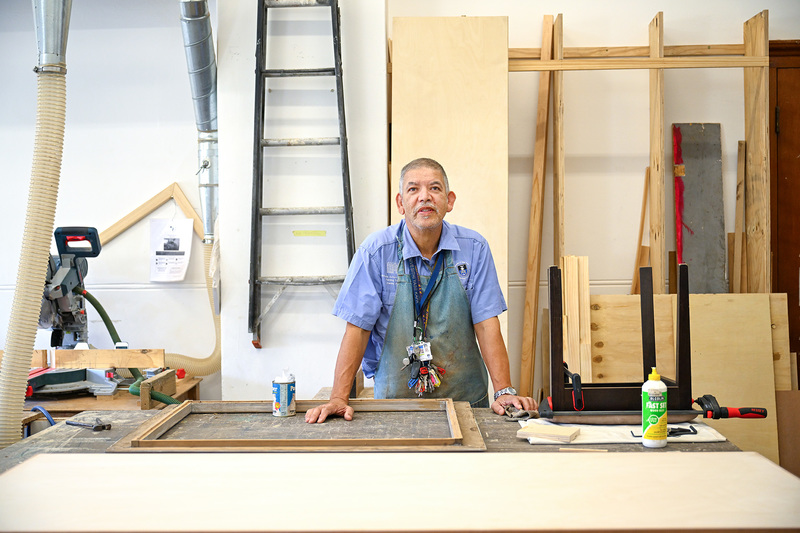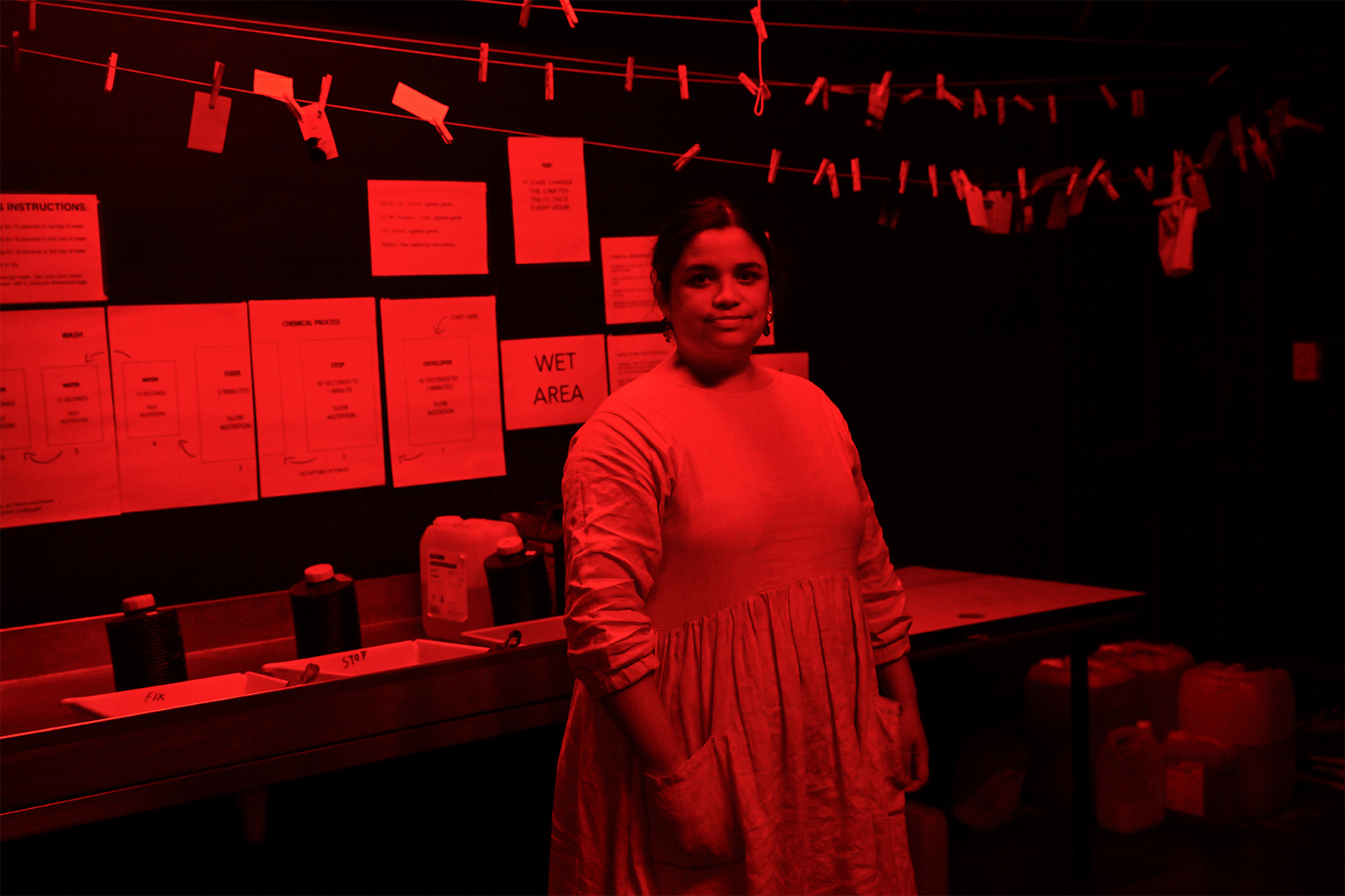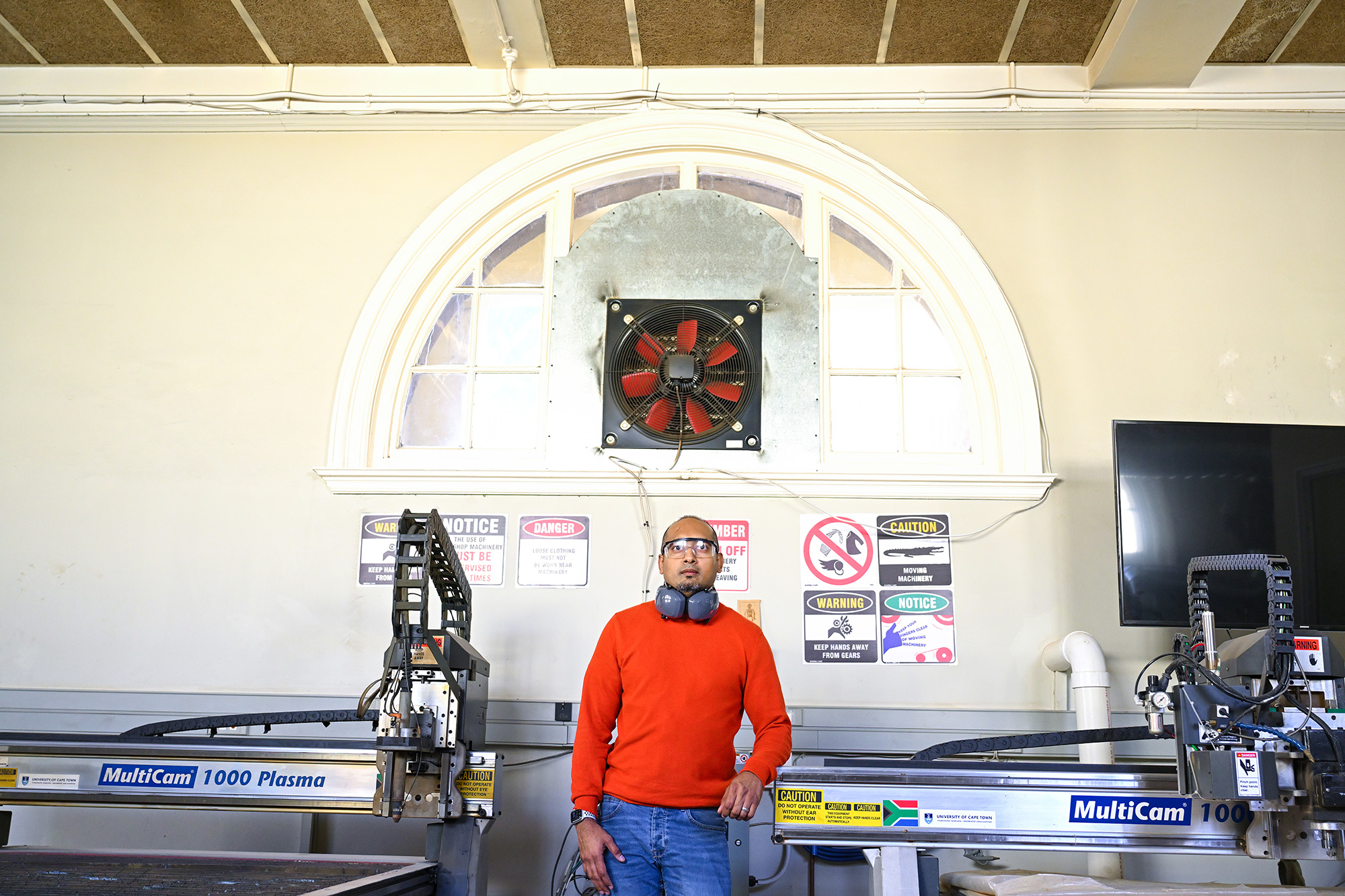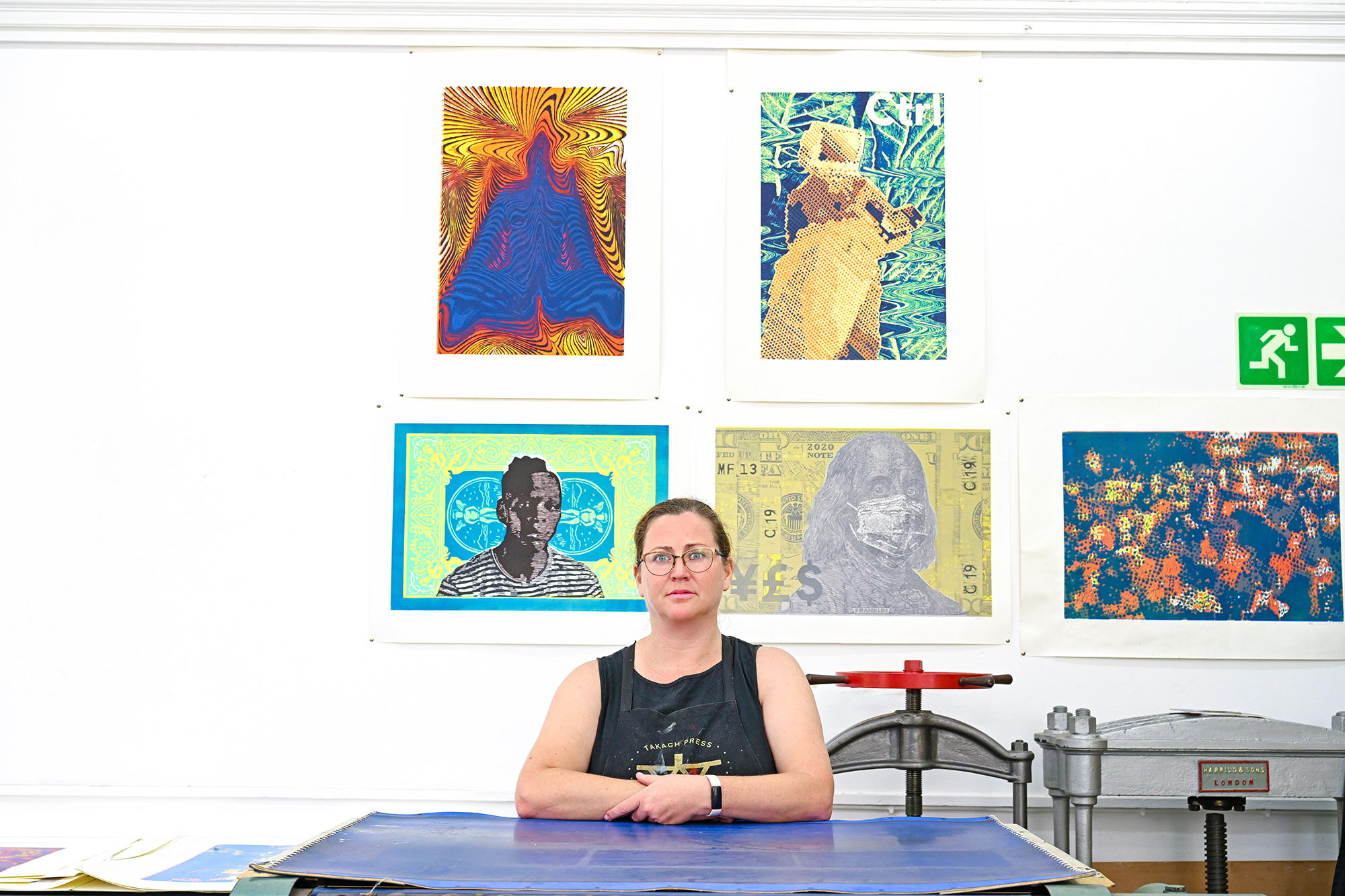A day in the life of technical staff at Michaelis
30 April 2024 | Story Kamva Somdyala and Lerato Maduna. Photos Lerato Maduna. Read time 7 min.
The technical staff at the University of Cape Town’s (UCT) Michaelis School of Fine Art can be described as ‘Swiss army knives’ – such is the extensive nature of their work with students. And they would not have it any other way.
Ahead of Workers’ Day on 1 May, the staff spoke passionately about their experience in their fields, their love for the work they engage in and their relationship with the students they serve daily. Founded in 1925, the school is recognised as one of South Africa’s foremost institutions for the study of fine art and new media at an advanced level. During their studies, students have access to an impressive range of resources and facilities.
Not motivated by money
A former factory foreman, Stanley Amon is the school’s technical officer in the painting department. “My motivation for this job is not money; it’s about assisting people,” said Amon. The feedback I get is that I am their [students’] testimony; my line manager used to speak highly of me through the students. My line manager would tell me that this space is mine and I am responsible for it. I can’t say much about myself because it must come from the people I interact with.”
Amon arrived at UCT in 2012 and believes he is here “to nurture people’s individual gifts”.
“My motto is whatever you receive from me, go and do the same out in the world. You might come across someone in need who might not have money and you will be the answer for that person … that person will never forget the seed you sowed in them so they can become a tree that bears its own fruit,” he explained.
“I’ve been blessed to be in this space. There have been so many firsts in this space.”
“Because of my vast experience in the industry, I am open to anyone who might need my help such as new media, photography, sculpturing, so I never actually know what a day holds. I have an open-door policy which involves students and lecturers. It’s exciting like that.
“I’ve been blessed to be in this space. There have been so many firsts in this space. We had a lovely project last year with a student in pottery and I made mouth pieces for three of them and we could play music through them. We’ve just finished a project with a 17-string guitar. The journey has been amazing.”
Growth of students
Senior photography technician, Sitaara Stodel, is a UCT alumna and enjoys assisting students in the darkroom with analogue and film photography. “I assist them with both digital and analogue photography – that includes studio photography, developing film as well as cameraless photography such as lumen prints and cyanotypes. I also look after the equipment and the maintenance of that equipment. The darkroom also has chemicals, so I oversee the recycling of those chemicals and try and be as kind to the environment as possible.”

She added: “I really enjoy working with students; it’s amazing seeing them grow from first year all the way to fourth year and how their confidence changes for the better; they make more friends; they enrich their ideas and their minds become more open to possibilities. I’m also inspired by them because as they create, I feed off their creativity as well.
“I’m also a second-year master’s student, so I also balance studies with the work. I am grateful that UCT encourages learning and education for everyone who works here. The first half of the year is usually the busiest, so it’s about managing your time.”
Asked if she had a favourite project she’s worked on, Stodel said it was difficult to pinpoint one. “All of them have something amazing in them. I am excited by the materiality projects where we experiment with different ways to think about photography (mixing chemicals and coating paper in the darkroom) and seeing reactions from students about the ways they can work their projects. It’s a very rewarding line of work.”
Combination of skills
As the principal technical officer for new media, Melvin Pather has observed some interesting developments. “When I started, there were stringent boundaries by way of different disciplines: new media, paintings, sculpture, photography, print media. Over the years, lines slowly started getting blurred (photography students dabbling in print making; sculpture students shooting videos). There’s a lot of mixed media art being created. New staff have also brought new ideas. It’s beneficial for students because they have a well-rounded education by way of their creative skills.”

As someone who recently completed his master’s in higher education studies, Pather believes upskilling is integral in his work as he incorporates his passion for art, creativity, and technology. “My job combines all three and I am really excited every day to come and deal and work with students to create their ideas and bring them to life. I have a very professional relationship with all my students, from first year to master’s. Students can speak to me about anything from a technological front to idea formulation to offering advice.”
He teaches creative software related to the different projects that run from first year to master’s: aspects of new media such as digital illustration, photoshop, animation, video editing and laser cutting.
Ownership and belief
Madelize van der Merwe arrived at Michaelis four years ago and is the senior print technician. “What I enjoy about the technical side is the area of printing it focuses on: how to do colour reduction and layering. There are 12 different printing techniques we cover, and I deal mostly with second- and third-years,” said Van der Merwe.
“Students motivate me. There’s always an interesting group of students and they are so full of life. They bring passion to the atmosphere, and I love working with people who are passionate. I also practise what I do on the side as well and its part of my developmental training because I have to keep abreast about new techniques. There’s always more to learn, which is why I enjoy coming to work.”

She added: “I’ve fostered a quiet observer relationship with my students: observing what they are saying via their art and print making is a medium which I call ‘artivist’ (activism art) but it’s also about mass communication and seeing how students think. I instil belief in students, because I think sometimes artists can be doubtful of not only themselves, but their work as well. I also try and entice a feeling of ownership, belief and positivism.”
 This work is licensed under a Creative Commons Attribution-NoDerivatives 4.0 International License.
This work is licensed under a Creative Commons Attribution-NoDerivatives 4.0 International License.
Please view the republishing articles page for more information.










